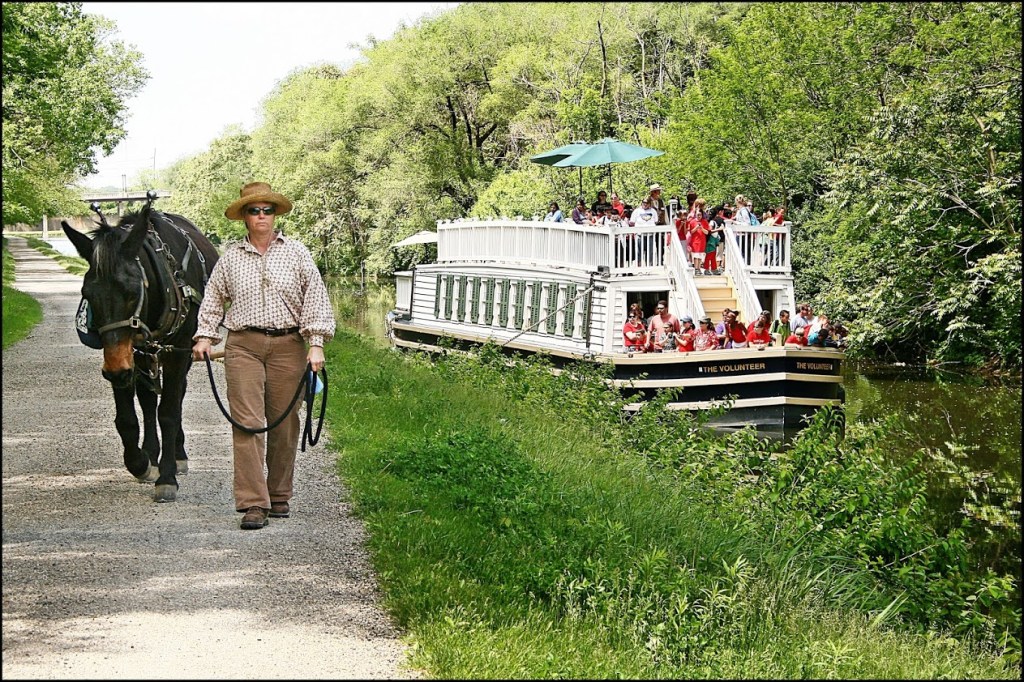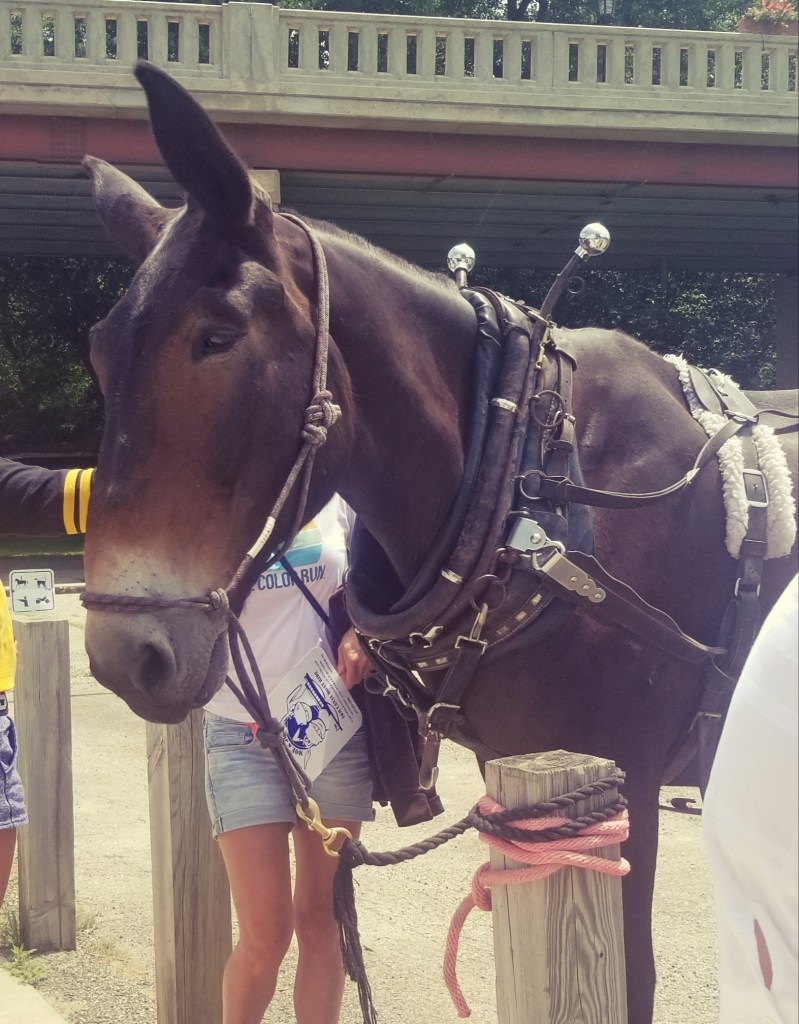
LaSalle, Illinois in 1848 was bigger than Chicago when the Illinois & Michigan Canal (I&M Canal) was completed, connecting the Illinois River to Lake Michigan. Water travel reigned as the fastest way to move people and goods across the United States. The canal gained importance for people’s livelihoods, politics and policy, the growth of Chicago, and travel. Today, a boat ride tour, pulled by a single mule down a small portion of the formerly active canal, physically connects you to the past. The tour guide stresses the canal’s crucial history during its reign and covers a significant portion of it. The tour’s setting and how it presents the canal’s history, pull it together to make it a unique experience. However, what the tour makes up in history and setting, it falls short on engaging the audience and encouraging visitors to explore the rest of the I&M Canal National Heritage Area (NHA).
A Taste of History: The Boat Ride
The start of the tour eases you into a laid back and nostalgic atmosphere for a time a visitor today would not have remembered. When you arrive in Lasalle, the café that holds the visitor center desk for the boat rides sits on the charming downtown avenue filled with businesses housed in brick buildings from an earlier era of the town. Just behind the café/visitor center and under a bridge is where The Volunteer, a 1840s packet boat replica, sits in the canal waiting for visitors to board. Larry the mule stands waiting nearby to be hooked to the boat and start his daily chore. Some tours offered on the canal have the crew dressed in period clothing. The three-person crew starts the tour off by going into a little more detail about themselves, mules, and the boat. Once “The Volunteer” leaves its dock you are taken about a mile down the canal. The crew consists of a boat captain, a deckhand, and a mule tender—one who guides the boat, one who tells the history, and one who guides the mule along the shore, respectively. The deckhand is essentially your guide through history, starting from the beginning when Indigenous Peoples used the Illinois River and Lake Michigan to the present day that touches on the canal’s designation as a National Heritage Area. The only interaction you can have with the deckhand is halfway through the tour when the boat turns back and he opens the floor for a few questions. It gives people an option to just enjoy the boat ride and tune out any historical insight or to listen with attentiveness to every word.
The tour content focuses on how the canal affected politics, economy, and people through time, demonstrating exactly what the I&M Canal Heritage Area values. It takes you all the way from how plans to build the canal changed what we think of the Illinois landscape today to the restoration and preservation stories of the canal giving its story a triumphant ending as the first federally designated National Heritage Area in the United States.
At the end of the tour everyone disembarks, and visitors are encouraged to meet Larry the mule giving him attention and admiration. Some visitors choose to wander part of the canal on foot—a path built alongside it that goes for 90 miles out of its original 96-mile length—and read plaques and other signs to get a little more history.

Is There Something Missing?
Visitors experience the setting before anything else. Even when the crew is not dressed in period clothing, the atmosphere does a good job of introducing itself as a reflection of its earlier years. The tour relies on the setting and stays aware that visitors will immediately have questions about it on their mind by starting off with an explanation of the crew, mule, and boat.
Although, how the tour guide delivers information revealed one of the boat tour’s weaknesses. Instead of relying on Audience Centered Experiences (ACE), the canal boat tour decides to stick with a more traditional lecturing approach. ACE has become an increasingly used element in National Park Service (NPS) tours and best described as a technique that encourages more dialogue with an audience in order to “guide mean-making experiences[1]. Despite the I&M Canal’s connection to the NPS, the tour decides to forgo the technique. Information is delivered via speakers installed on the boat creating a bit of distance between the guide and the audience. It again emphasizes how much the tour relies on its setting. The information becomes difficult to keep up with since there is only a small pause in the stream of details delivered.
Furthermore, the tour’s expressed values lean towards a more rose-colored view of the time. It touches briefly on the mistreatment of workers, mentioning that during harder times workers were paid in scrip instead of cash who then struggled to make ends meet. A lot of current literature also takes a lighter, jubilant view of the canal and its history as well, focusing on most of the good it created. A solution may be found in special boat tours or other programs that focus on unexplored topics. If there is any turbulent history connected to the I&M Canal, it has been detailed very little.
Lastly, without the supplemental material—in particular, the I&M Canal National Heritage Area brochure—it is harder to understand the rest of the 96-mile canal and its associated sites without maps displayed anywhere else. A few words about the other historic sites and tours along the I&M Canal while on the boat tour would have been beneficial to understanding the significance of the entire National Heritage Area but were missing despite being an easy addition.
An Exceptional Experience
The I&M Canal Mule-Pulled Boat Ride strives to hit the mark on the principles that are part of the mission it and other associated historic sites share, but it does fall short in a few places. It does well to show the preservation of the history of the I&M Canal, using the replica packet boat and environment to its advantage. Yet the delivery of the history falls short when told through a more lecture style and impersonal method. The tour highlights the impact the I&M Canal had on the people and industry along it; the missing perspectives leave a hole, nonetheless. On top of the missing perspectives, the tour fails to mention other sites and tours to explore which hurts what could be an introduction to the greater region. Overall, the I&M Canal Mule-Pulled Boat Ride has its strengths, but improvements can be made to help it become an exceptional experience.
Ve’Amber D. Miller
[1] Foundations of 21st Century Interpretation, Ver. 2017 (Harpers Ferry: National Park Service, 2016),5.

Your article is great!
fantastic and wonderful!